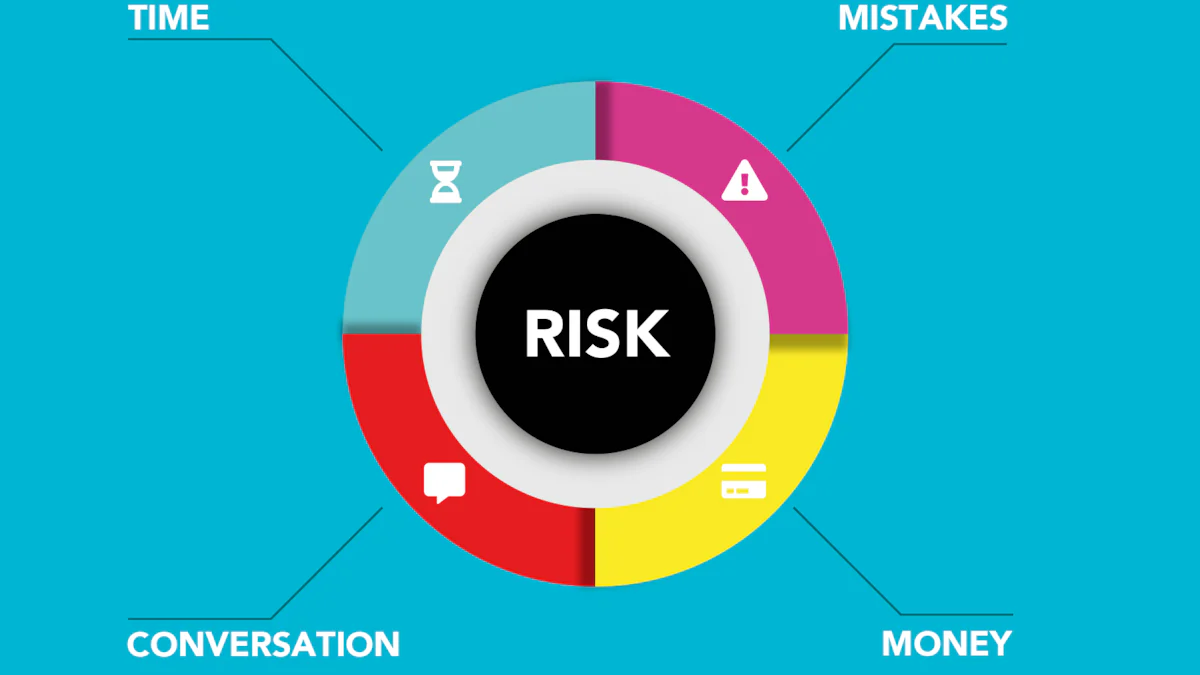Social Engineering Tactics Used Against Financial Institutions

Social engineering tactics involve manipulating individuals to reveal confidential information, posing a significant threat to financial institutions. Understanding these social engineering tactics is essential for enhancing security awareness within the financial sector. The growing threats from social engineering tactics target financial institutions due to their lucrative nature. Nearly 89% of these attacks are aimed at financial gain, underscoring the urgent need to combat social engineering tactics. Discussions around the basics of social engineering and the workings of engineering fraud reveal how attackers exploit trust. Financial institutions must actively engage in ongoing conversations to counteract social engineering tactics. The expanding threat landscape necessitates heightened vigilance against successful social engineering fraud.
Common Social Engineering Threats

Phishing
Phishing represents a significant threat to financial institutions. Attackers often use phishing emails to deceive employees and customers. These emails appear legitimate and trick recipients into revealing sensitive information. The financial industry faces an increase in phishing attacks, especially targeting financial apps.
Email Phishing
Email phishing involves sending fraudulent messages that mimic trustworthy sources. Attackers aim to steal login credentials or financial data. Financial institutions must educate employees about recognizing phishing emails. Awareness can reduce the risk of falling victim to these tactics.
Spear Phishing
Spear phishing targets specific individuals within an organization. Attackers gather intelligence on their targets to craft personalized emails. This tactic increases the likelihood of success. Financial institutions should implement robust email filtering systems. These systems can help detect and block spear phishing attempts.
Pretexting
Pretexting involves creating a fabricated scenario to obtain confidential information. Attackers often impersonate trusted figures to gain access to sensitive data. Financial institutions need to remain vigilant against these tactics.
Impersonation Scenarios
Impersonation scenarios involve attackers posing as bank officials or customer service representatives. Victims unknowingly share personal information under false pretenses. Financial institutions should train staff to verify identities before disclosing any information.
Data Gathering Techniques
Data gathering techniques involve collecting information from various sources. Attackers use social media profiles and public records to build detailed profiles of their targets. Financial institutions should monitor for unusual data requests. Intelligence teams can play a crucial role in identifying potential threats.
Baiting
Baiting lures victims with promises of rewards or incentives. Attackers use both physical and digital methods to execute these schemes. Financial institutions must educate employees about the dangers of baiting tactics.
Physical Baiting
Physical baiting involves leaving infected devices in public areas. Curious individuals pick up these devices and connect them to their computers. This action grants attackers access to the network. Financial institutions should enforce strict policies regarding unknown devices.
Digital Baiting
Digital baiting uses online platforms to entice users into downloading malicious software. Attackers often disguise malware as legitimate software updates or free downloads. Financial institutions should implement security measures to prevent unauthorized downloads.
Tailgating
Tailgating represents a significant threat to the Financial Services Industry. Attackers exploit physical security weaknesses to gain unauthorized access to secure areas. This specific social engineering threat often involves individuals following employees through secure entry points without proper authentication. Financial institutions must prioritize security awareness to prevent tailgating incidents.
Physical Security Breaches
Physical security breaches occur when unauthorized individuals enter restricted areas. Threat actors often use tailgating as a method to bypass security measures. Financial institutions should implement strict access control measures. Security personnel must remain vigilant to prevent unauthorized entry. The Quarterly Threat Landscape Report highlights the increasing risk of tailgating in the Financial Services Industry. Regular security audits can help identify vulnerabilities in physical security protocols.
Insider Threats
Insider threats pose a significant risk to financial institutions. Employees may unknowingly assist threat actors through tailgating. Social engineering campaigns often target employees to exploit their trust. Financial institutions must conduct regular training sessions to enhance security awareness. The Services Quarterly Threat Landscape emphasizes the importance of monitoring employee behavior. Financial institutions should establish clear protocols for reporting suspicious activities.
Case Studies:
Incident at a Major Bank: An insider threat facilitated unauthorized access, resulting in data theft. The bank implemented stricter access controls and enhanced employee training.
Data Breach in a Financial Services Company: Tailgating led to a significant breach. The company reinforced physical security measures and increased surveillance.
The Financial Services Industry faces ongoing challenges from social engineering tactics. Tailgating remains a prevalent issue that requires continuous attention. Financial institutions must adopt comprehensive strategies to mitigate these risks. The Quarterly Threat Landscape underscores the need for proactive measures. Security awareness and robust protocols are essential to combat social engineering fraud scams.
Case Studies of Social Engineering Fraud
Notable Incidents
Incident at a Major Bank
A major bank experienced a significant security breach due to social engineering tactics. Attackers used phishing emails to deceive employees. These emails appeared legitimate and requested sensitive information. Employees unknowingly provided confidential data. This incident highlighted the vulnerability of banks to social engineering attacks. The bank responded by implementing stricter security protocols. Employee training programs were enhanced to increase awareness of phishing threats. Regular workshops now educate staff on identifying suspicious communications. The Financial Services Quarterly Threat report emphasizes the importance of such measures.
Data Breach in a Financial Services Company
A financial services company suffered a data breach through tailgating. An unauthorized individual gained access to secure areas by following employees. This breach resulted in the theft of sensitive customer information. The company took immediate action to reinforce physical security measures. Surveillance systems were upgraded to monitor entry points. Security personnel received additional training to prevent unauthorized access. The Financial Services Quarterly Threat report underscores the need for robust physical security protocols. Regular security audits now help identify vulnerabilities in the company's security systems.
Lessons Learned
Importance of Security Awareness
Security awareness plays a crucial role in preventing social engineering fraud. Banks must prioritize employee education to combat these threats. Regular training sessions can enhance the ability to recognize phishing attempts. Awareness programs should cover various social engineering tactics. Employees need to understand the risks associated with sharing confidential information. The Financial Services Quarterly Threat report highlights the effectiveness of security awareness initiatives.
Need for Robust Security Protocols
Robust security protocols are essential for protecting banks from social engineering fraud. Access control measures must be strict to prevent unauthorized entry. Security teams should conduct regular audits to identify potential weaknesses. Banks should implement multi-factor authentication for sensitive transactions. Email filtering systems can help detect and block phishing attempts. The Financial Services Quarterly Threat report emphasizes the importance of comprehensive security strategies. Banks must remain vigilant to safeguard against evolving social engineering tactics.
Strategies for Mitigating Social Engineering Risks

Financial institutions face persistent threats from social engineering fraud. Implementing effective strategies can mitigate these risks. The following approaches focus on employee training, technological solutions, and policy enhancements.
Employee Training and Awareness
Employee education is crucial in combating social engineering fraud. Financial services must prioritize regular workshops to enhance security awareness. Workshops provide employees with knowledge about common fraud tactics. Employees learn to identify phishing attempts and other deceptive practices.
Regular Workshops
Regular workshops offer continuous learning opportunities. Financial institutions should schedule these sessions frequently. Workshops cover various social engineering threats and fraud scenarios. Employees gain practical skills to recognize suspicious activities.
Simulated Attacks
Simulated attacks test employees' responses to potential threats. Financial services can conduct these exercises to assess preparedness. Simulations mimic real-world social engineering fraud attempts. Employees practice identifying and reporting fraudulent activities. Simulated attacks reinforce the importance of vigilance.
Technological Solutions
Technology plays a vital role in preventing social engineering fraud. Financial institutions must adopt advanced tools to safeguard sensitive information. Email filtering systems and multi-factor authentication enhance security measures.
Email Filtering Systems
Email filtering systems detect and block phishing emails. Financial services benefit from implementing these technologies. Filters analyze incoming messages for suspicious content. Employees receive alerts about potential threats. Email filtering systems reduce the risk of falling victim to fraud.
Multi-Factor Authentication
Multi-factor authentication adds an extra layer of security. Financial institutions should require this method for accessing sensitive data. Authentication involves verifying identity through multiple steps. Users provide additional credentials beyond passwords. Multi-factor authentication protects against unauthorized access.
Policy and Procedure Enhancements
Strong policies and procedures form the backbone of security strategies. Financial services must establish comprehensive protocols to address social engineering fraud. Incident response plans and access control measures are essential components.
Incident Response Plans
Incident response plans outline steps for addressing security breaches. Financial institutions should develop detailed procedures for handling fraud incidents. Plans include communication strategies and recovery actions. Employees follow established protocols during security events. Incident response plans minimize damage from social engineering fraud.
Access Control Measures
Access control measures restrict unauthorized entry to sensitive areas. Financial services must enforce strict access policies. Measures include secure entry points and identity verification. Employees adhere to protocols for accessing confidential information. Access control measures prevent unauthorized individuals from exploiting vulnerabilities.
Case Studies:
Flagstar Bank Data Breach: A massive data breach compromised Social Security numbers of almost 1.5 million customers. The incident highlighted the need for robust security measures.
Capital One Data Breach Lessons: The breach emphasized securing cloud technology and firewall configurations. Financial services learned valuable lessons about protecting digital assets.
First American Financial Corporation Data Breach: Over 885 million personal and financial data points were leaked. The breach underscored the importance of safeguarding sensitive information.
Evolve Bank & Trust Data Breach Lessons: The breach demonstrated the vulnerability of established institutions to advanced attacks. Financial services recognized the need for modern security technologies.
The financial services industry must remain vigilant against social engineering fraud. Strategies such as employee training, technological solutions, and policy enhancements play a crucial role. Financial institutions can protect themselves by adopting comprehensive security measures. Continuous improvement and adaptation to evolving threats are essential.
Vigilance against social engineering remains crucial for financial institutions. Continuous improvement in security measures ensures resilience against evolving threats. Employee education serves as the first line of defense, as noted by cybersecurity experts. Organizations must prioritize cybersecurity to protect sensitive information. Financial institutions should implement robust security strategies. Awareness of potential threats simplifies the implementation of these strategies. A proactive approach safeguards both employees and customers. Prioritizing cybersecurity strengthens defenses against social engineering tactics.
See Also
Preventing Phishing Attacks on Financial Institutions
Insider Risks in Finance Companies
Managing Cyber Threats in Financial Sector
